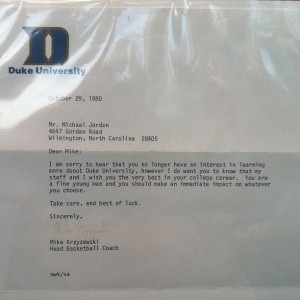By Cali Ressler
The memo from Yahoo!’s CEO Marissa Mayer has put telework, flexible work schedules, and other work/life balance programs into the spotlight in recent days. It’s perplexing, laughable, and almost unfathomable that we’re still debating whether or not people should be able to work outside of the office.
The evidence is clear that every important metric goes up when you give people freedom to work where and when they want: employee engagement and satisfaction, productivity, customer satisfaction, to name a few. But with autonomy comes accountability. Are employees accountable for results or just accountable for ‘showing up’? Is everyone aware of how their results are being measured? If people aren’t delivering, why do they still have a job? Just pulling people back into an office does not, in any way, shape or form set a better foundation for collaboration, communication, or innovation.
We know that communication and collaboration can (and does) happen between and among people anywhere at any time. So what’s the real problem? We’re still following a very deeply rooted formula of time + presence = results. If I can see you in the office, I believe you’re working! When I see you talking with your colleagues, I get all warm and fuzzy because I think you’re solving our business challenges or coming up with the next big idea. When I hear everyone talking about working 80 hours a week, I feel like they’re earning their keep. When I see them complaining about missing out on important aspects of their lives, I feel good because I’m in the same boat…and really, we’re all in this together.
We need to stop using this formula. We need to stop using the F word. Flexibility and these other terms are not worth of our energy. Yahoo! has organizations all over the country asking if they should do a rigorous study of their telework programs. Um, no. Instead, do a rigorous study of whether your people know what they’re supposed to be doing…regardless of where they are. And so…death to the following words:
1. Telework
Back in the days when dinosaurs walked the earth, someone came up with the brilliant idea to allow some people to telework. Now there are a million different flexible work programs to make people excited about flexibility–like My Work, iWork, My Mobile Workplace, Mobility ‘R’ Us, Mobile Me, and Teleriffic. No matter how you market it, it’s the same thing: a program that manages people’s time because we know they can’t be trusted to manage it themselves. A program that says “I’m inept at managing what you need to achieve, so I’m going to manage how you spend your time.” We need to go beyond telework. Its time is so over.
2. Flexible Schedule
Flexible schedule is an oxymoron. Think about the poor manager who is managing their employees’ flexible schedules. We’ve seen it time and again: “Bob, you’re telling me you want to switch your flex days from Tuesday and Thursday to Monday and Friday. Hmmm…I’ll have to think about that and get back to you next week.” Is Bob incapable of knowing when he needs to be in the office and when he doesn’t need to be? The manager might think so. But in the end, if the results aren’t achieved, it’s a performance issue that must be dealt with, not an attendance issue.
3. Remote workers/virtual workers/teleworkers
Telework implies that you’re not a real worker, just a teleworker. It is the label we put on people who are just not where they should be: the office! Everyone back at the office is talking about the people who get to work outside the office. “I wish I could work from home!” “Those of us in the office do all the work!” Sound familiar? Telework programs foster a sense of entitlement – not consciously, but because they cause people to think in a backwards manner: “I want to work from home…so my work better fit into that.” Without a telework program in place – when you have an environment that determines measurable results, and fosters and accountability, you have people instead thinking “These are my results, this is how I’m being measured, so now I can figure out the most productive, efficient ways to do that.”
4. Permission
With discussions of flexibility and telework, the end result is the employee asking managers for what amounts to a hall pass.
You have my permission to work from home on Fridays. You have my permission to leave work at 4:30 to pick up your child. We allow employees to telework twice a week – aren’t you happy about that?! I let my employees go to the dentist.
If you want to work from a different place or at a different time than the socially accepted standard office hours, you have to ask permission. And at that moment, the manager is in the position of managing your work location and time … not the work itself. It makes you feel like you’re back in high school asking your parents’ permission to stay out an extra hour on Friday night.
5. Flexibility
The more we talk about flexibility, the further we remove ourselves from talking about the one thing that’s important: the work. Change the conversation. Get crystal clear about the measurable results each person is accountable for, and get out of the managed flexibility game. People can manage their own time. [“But what if they can’t?” Then they most likely aren’t getting to their results and need to head into the land of consequences.]
Let’s face it. The world is changing. Fifty years from now nobody will be talking about flextime, compressed workweek, telework, reduced hours, remote working, virtual working or home-officing.
We will not be segmenting people who do work by labeling them. LIFE will happen. Work will happen. Wherever. Whenever.
Cali’s Bio

Cali Ressler, along with her partner Jody Thompson, is the Founder of CultureRx and co-creator of the Results-Only Work Environment (ROWE). Cali is a nationally recognized keynote speaker and author of bestselling business book Why Work Sucks and How to Fix It. Her second book, Why Managing Sucks and How to Fix It is the field guide for how to manage work in the 21st century.


